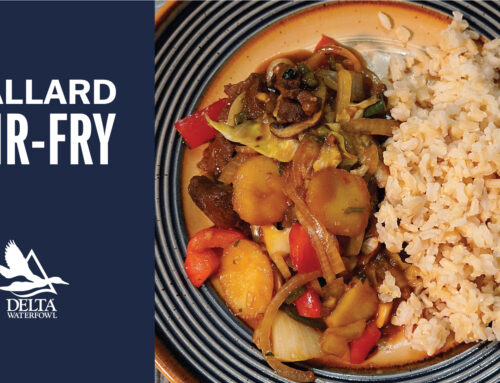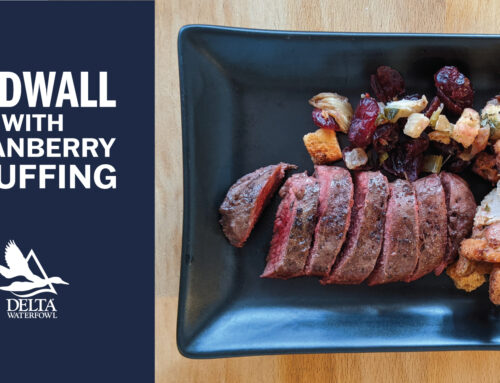The GOOD STUFF Smoked Goose Breast
The name of this recipe comes from a friend’s young children – somewhat finicky eaters – to whom I served this smoked goose breast for the first time. They went crazy for it, and they always ask me now when I’m going to bring them more of the “good stuff” again!
This recipe only requires a few ingredients, and really isn’t too fussy. Like most smoking recipes, it just takes some time.
Ingredients
Goose breast fillets – Big or small Canadas, snows, specks all work just fine, but if you have a variety of sizes you just need to monitor the internal temperature a bit closer in final smoking to avoid drying out the smaller pieces
¾ cup Morton’s Tender Quick
¾ cup brown sugar
2-3 tablespoons black strap molasses
¼ cup of your favorite hot sauce
5 cups of cold water
favorite red wine (optional)
Directions
- Thaw and trim all breast fillets thoroughly.
- Mix all ingredients (except wine) in a bowl large enough to hold all the meat with room to spare.
- Stir until all ingredients are dissolved and thoroughly mixed.
- Submerge breast fillets in marinade and weight with a plate to keep submerged.
- Refrigerate for at least 24 hours. Up to 48 is fine.
- Soak wood for smoking.
- Prepare a cooling rack on a tray to collect drippings. Lay out breast fillets well-spaced in a single layer.
- Allow to air dry at room temperature for at least a couple hours until the surface feels tacky.
- In the meantime, prepare the smoker including the smoked wood and bring temp to an even 200 degrees.
- Add a disposable foil tray between fire and the grate. Add liquid to the tray. (Red wine works great, but even plain water is fine.)
- When smoker is back to temperature, space the breast fillets evenly on cooking grate.
- At one hour (for smaller pieces) begin checking internal temperatures. When internal temp at center of fillet reaches 144-146 degrees, remove from the smoker and allow to cool.
- Store in zipper top bags in refrigerator and slice thin to serve. The whole smoked fillets can also be refrozen for later use.






Leave A Comment